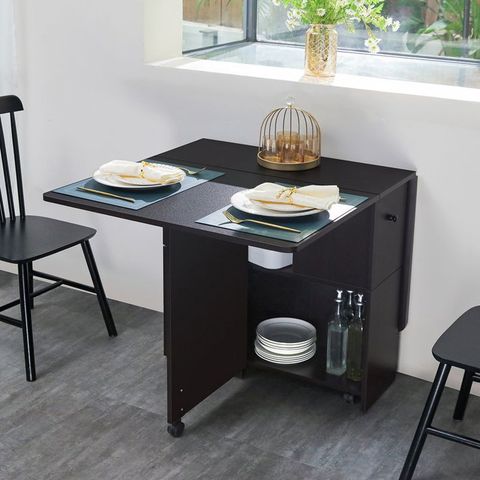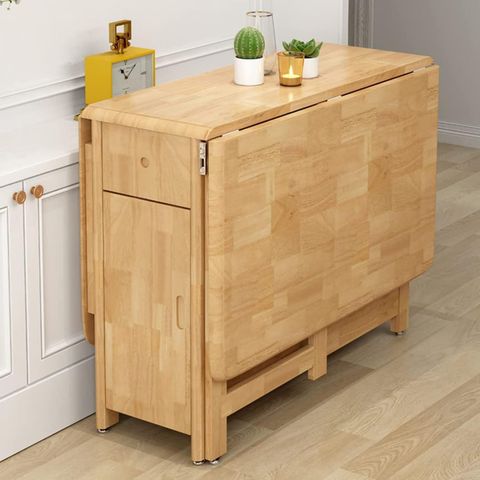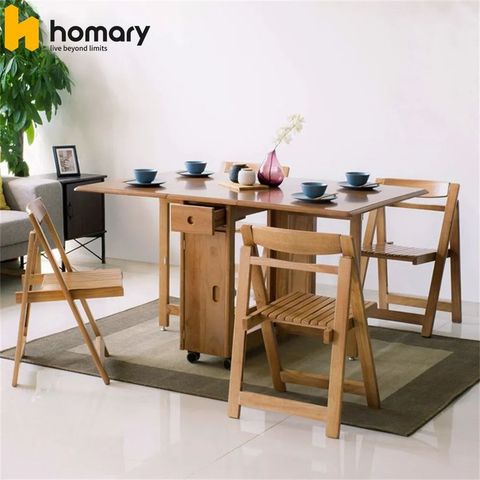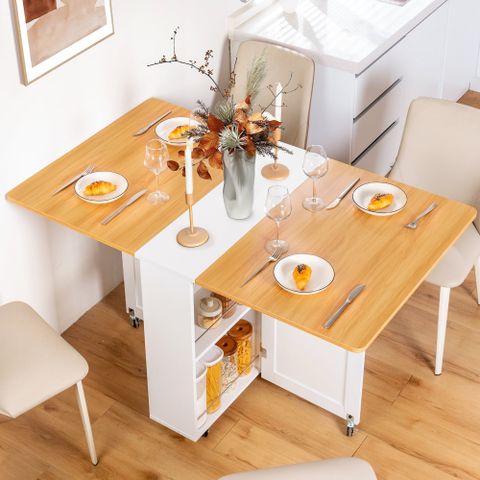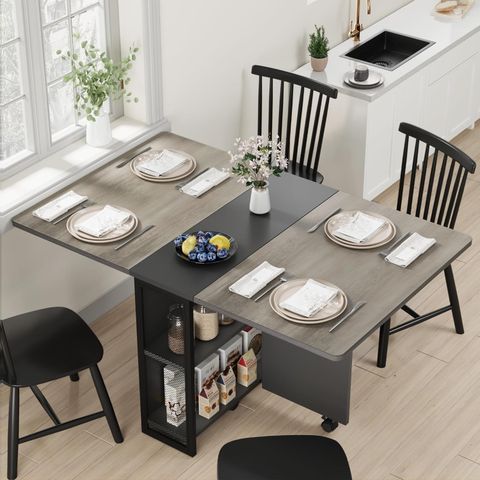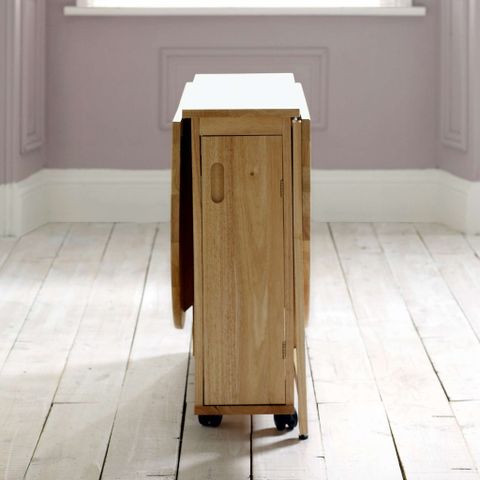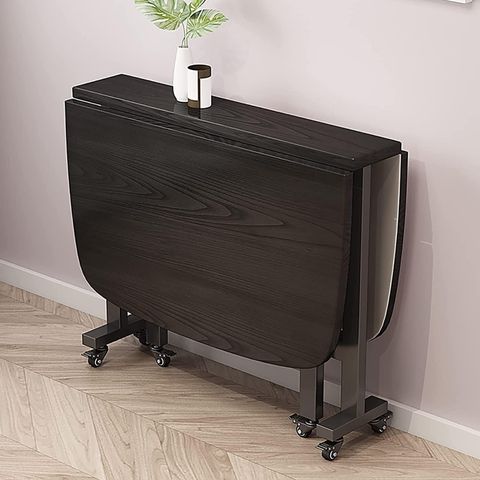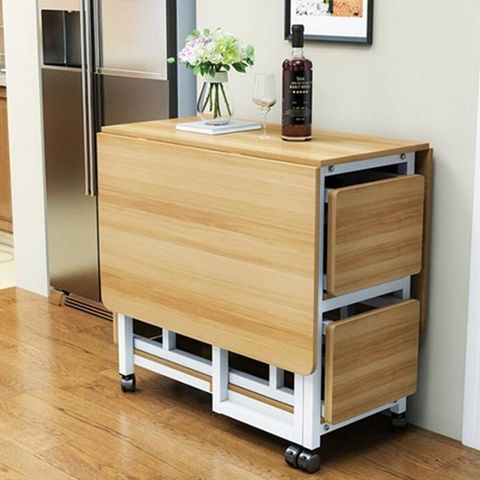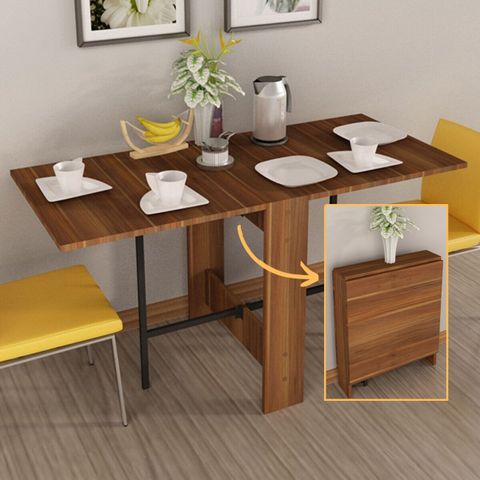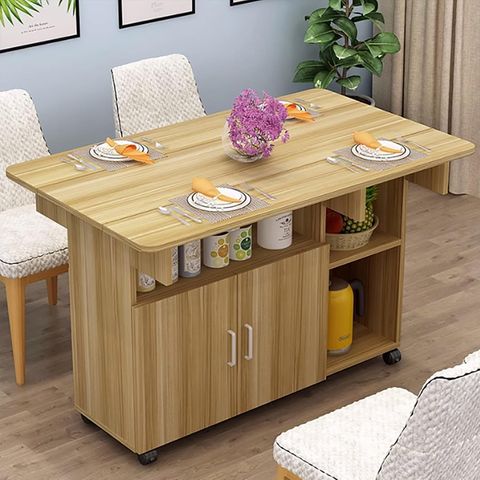Imagine walking into a kitchen where the dining area transforms from a narrow counter to a full-sized table with just one simple motion. That’s the magic of fold-out dining table designs. These clever solutions are breathing new life into tiny apartments, studio units, and homes with limited space. What started as a practical necessity has evolved into an art form of space optimization, proving that sometimes the smallest changes can create the biggest differences in our daily lives.
In today’s urban landscape, where square footage often comes at a premium, the challenge of creating functional dining spaces has become increasingly complex. Small apartments, converted garages, and studio units demand creative solutions that maximize every inch of available space. Enter the fold-out dining table – a revolutionary approach that transforms cramped quarters into welcoming dining areas. These innovative designs don’t just save space; they redefine what’s possible in compact environments. Whether you’re living in a one-bedroom apartment or managing a home office that doubles as a dining room, these tables offer practicality without compromising style.
The Evolution of Compact Dining Solutions
The journey from basic folding tables to sophisticated fold-out designs reflects a broader shift in how we think about home functionality. Early versions were often clunky and utilitarian, designed purely for function rather than aesthetics. But modern designers have transformed these humble pieces into statement items that enhance rather than detract from their surroundings. Today’s fold-out tables incorporate materials like solid wood, tempered glass, and metal alloys that offer both durability and visual appeal. The evolution shows us that practicality and beauty aren’t mutually exclusive – they can work together harmoniously to create better living experiences.
Space-Saving Mechanisms and Design Innovations
What makes fold-out tables truly special is their engineering ingenuity. Consider how a table can seamlessly transition from a countertop to a full dining surface. This transformation happens through carefully designed mechanisms like hydraulic pistons, spring-loaded hinges, and pivot points that make the process effortless. Some models feature hidden storage compartments that reveal themselves when the table is extended. Others incorporate sliding panels that create additional workspace when not in use. The key is finding the right balance between structural integrity and ease of operation. A well-designed system shouldn’t require gymnastics to deploy, yet should provide enough stability for daily use. These innovations have made it possible to have a proper dining experience even in the most constrained spaces.
Material Choices and Their Impact on Functionality
The materials used in fold-out tables significantly affect their performance and longevity. Solid wood offers warmth and classic appeal but requires more maintenance. Glass provides a sleek, modern look and easy cleaning, though it may show fingerprints and scratches more readily. Metal frames bring strength and industrial chic, while composite materials offer durability and resistance to wear. Each choice involves trade-offs between cost, appearance, and practicality. For instance, a lightweight aluminum frame might be ideal for frequent moving, while a heavy oak construction suits permanent installations. The material selection also affects how the table integrates with existing decor and whether it can handle the weight of regular meals and gatherings.
Integration with Existing Kitchen and Living Spaces
Successful implementation of fold-out tables requires thoughtful consideration of how they interact with surrounding elements. The table must complement existing cabinetry and flooring, creating a cohesive look rather than appearing like an afterthought. When positioned near a kitchen island, the fold-out design can create a natural workflow that allows for both food preparation and dining in the same area. The height of the table should match or complement adjacent surfaces, ensuring comfortable seating and preventing awkward transitions. Lighting considerations also play a role – adequate illumination over the dining area becomes essential when the table is frequently deployed. Many homeowners find that a single well-planned fold-out solution can serve multiple purposes, acting as a breakfast bar, homework station, and dining table all in one.
Real-World Applications and User Experiences
The true test of any design lies in how it performs in actual living situations. Users across different lifestyles share common themes in their experiences with fold-out tables. Young professionals often appreciate the flexibility of having a proper dining setup without permanently altering their space. Families with children find these tables useful because they can be easily stored away when not in use, reducing clutter and potential safety hazards. Some users report that these tables become conversation starters, showcasing their thoughtful approach to space management. Others highlight the unexpected benefits, such as using the table as a work surface during remote work periods or as a surface for casual entertaining. The variety of applications demonstrates how these tables adapt to different needs and circumstances.
Maintenance and Longevity Considerations
Like any furniture investment, fold-out tables require proper care to maintain their functionality and appearance over time. Regular cleaning with appropriate products helps preserve the finish and prevents buildup that could interfere with the folding mechanism. It’s important to follow manufacturer guidelines for lubrication and maintenance schedules, especially for tables with complex mechanical components. Users often discover that periodic checks of hinges and pivots prevent issues before they become major problems. The longevity of these tables depends largely on usage patterns and environmental factors like humidity and temperature fluctuations. Quality materials and construction tend to perform better under regular stress, making initial investment decisions particularly important for long-term satisfaction.
Fold-out dining table designs represent more than just clever space-saving solutions – they embody a philosophy of thoughtful living that embraces constraints as opportunities for innovation. These tables prove that limitations can inspire creativity and lead to better solutions than traditional approaches might offer. Whether you’re working with a studio apartment or simply want to maximize your existing space, these designs provide practical answers without sacrificing comfort or style. The key is understanding your specific needs and choosing a solution that fits seamlessly into your lifestyle. As urban living continues to evolve, these adaptable dining solutions will likely remain relevant, offering practicality and elegance in equal measure. The next time you walk into a small space and see a beautifully designed fold-out table, remember that you’re witnessing more than just furniture – you’re seeing the future of efficient, functional home design.

